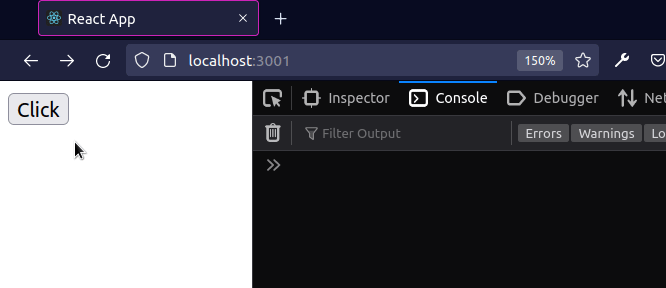How to create a Delay (Sleep) function in React
Last updated: Apr 7, 2024
Reading time·2 min

# Create a Delay (Sleep) function in React
To create a delay function in React:
- Define a function that takes the number of milliseconds as a parameter.
- Use the
setTimeoutmethod to resolve a Promise after the provided number of milliseconds.
import {useEffect} from 'react'; const delay = ms => new Promise( resolve => setTimeout(resolve, ms) ); const App = () => { const handleClick = async event => { console.log('before'); await delay(1000); console.log('after'); }; useEffect(() => { async function makeRequest() { console.log('before'); await delay(1000); console.log('after'); } makeRequest(); }); return ( <div> <button onClick={handleClick}>Click</button> </div> ); }; export default App;

We created a delay function that waits for N milliseconds before resolving a
Promise.
const delay = ms => new Promise( resolve => setTimeout(resolve, ms) );
The concept of a delay function is also commonly known as a sleep function.
If you find the naming more intuitive, rename your function to sleep.
const sleep = ms => new Promise( resolve => setTimeout(resolve, ms) );
A sleep or delay function is used to wait for N milliseconds before
performing an action.
The function takes the number of milliseconds as a parameter and uses the setTimeout method to wait for the specified number of milliseconds before resolving a Promise.
await the result or use the .then() syntax.We marked the handleClick function as async, so we are able to use the
await keyword in it.
const handleClick = async event => { console.log('before'); await delay(1000); console.log('after'); };
The function logs before to the console, then waits for 1 seconds and logs
after.
I've also written a detailed guide on how to clear a timeout or an interval in React.
# Using the sleep function inside of useEffect
The same approach can be used in the
useEffect hook but we can't mark
the function we pass to useEffect as async.
useEffect(() => { async function fetchData() { console.log('before'); await delay(1000); console.log('after'); } fetchData(); });
Async functions return a Promise object but the useEffect hook can only
return a cleanup function, so we have to define our async function inside
useEffect.
If you need to wait for the state to update, click on the link and follow the instructions.
# Using the sleep function with promises in React
You can also use the Promise.then() syntax instead of async/await when using
your sleep function.
const sleep = ms => new Promise(resolve => setTimeout(resolve, ms)); const App = () => { const handleClick = async event => { console.log('before'); sleep(1000).then(() => { console.log('this ran after 1 second'); console.log('bobbyhadz.com'); }); }; return ( <div> <button onClick={handleClick}>Click</button> </div> ); }; export default App;

The sleep function returns a Promise, so we can directly call the then()
method on the result.
The sleep function waits for 1 second in the example, so the .then() method
gets invoked after 1 second.
The code in the callback function we passed to .then() is run after the
promise in the sleep function has resolved.
I've also written a detailed article on how to fetch data on button click.

